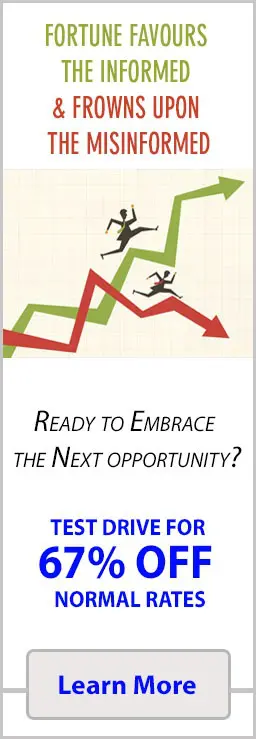
Mutual Fund Underperformance: Blood Offerings in Pinstripes
Oct 24, 2025
The sacrificial instinct persists, dressed in modern suits. Investors frame submission as loyalty, discipline, or sticking to the plan, but strip the velvet off the bones: it’s slaughter. Autonomy is surrendered to faceless institutions; fees flow like offerings to a priest who stopped believing long ago. Mutual fund underperformance thrives despite decades of evidence because sacrifice itself is valorized. Investors pay for ritual, not results. The priest does not need to produce rain—just belief.
Historical Receipts: When the Faithful Bled
In 2022, Cathie Wood’s ARK funds collapsed over 60% while believers held. “Disruptive innovation” became the chant as portfolios disintegrated. The narrative persisted; the capital did not. Magellan Fund, legendary under Peter Lynch, spent decades post-Lynch underperforming while collecting billions in fees. The name carried weight; the returns did not. Mutual fund underperformance isn’t anomaly—it’s business model.
2008 delivered equity fund losses of 40-50%. Recovery took years while independent traders rotated to quality, energy, and emerging markets. The funds stayed “fully invested” because their mandates demanded it. State screamed exit; the priests preached patience. LTCM, Amaranth, Hwang—all demanded faith until collapse. The pattern repeats: institutions package risk as responsibility, and investors confuse submission with strategy.
The Real Cost: Compound Sacrifice
A 1% annual fee seems modest. Over 30 years, it compounds to 30% less wealth. The average active fund underperforms its benchmark by 1-2% annually after fees. That’s not a rounding error—it’s a decade of retirement. “Professional management” costs you the difference between financial independence and working until you die. Mutual fund underperformance isn’t just about missed gains; it’s about lost time, lost compounding, lost autonomy.
But the emotional cost cuts deeper. You defend losses you didn’t choose. You ride drawdowns that violate your risk tolerance. You explain to your spouse why the “safe” fund just lost 40%. The shame of years wasted, watching your future shrink while advisors collect fees on assets under management—not performance—compounds like debt.
Rituals of the Blind
Sun Bin noted deception works best when it looks like duty. The fund industry mastered this: obedience wrapped in responsibility. “Stay the course.” “Ride out volatility.” “Think long term.” Noble phrasing, hypnotic function. These aren’t advice—they’re incantations. Ritual dulls thought while appearing meaningful. Pain becomes performative. Reward may never come; the priest collects rent regardless.
The language is weaponized. “Fiduciary duty.” “Prudent investor rule.” “Diversified portfolio.” Each phrase designed to make independence feel reckless and submission feel wise. Advisors are paid on AUM, not results. They profit from your faith, not your gains. Mutual fund underperformance is profitable—for them.
Technical Traps: How the Ritual Bleeds You
Moving averages lag by design. By the time a fund’s 50-day crosses its 200-day, you’ve already ridden the loss. Buy-and-hold ignores state: interest rates, credit spreads, breadth, volatility term structure. Fund managers are forced to stay invested when every dial screams exit. They can’t rotate to cash when the cycle turns because their mandate forbids it. You, the investor, pay for their constraint.
Mutual fund underperformance is structurally embedded. Funds hold 100+ positions to appear diversified, but concentration still exists—just hidden in sector tilts and cap-weighted illusions. When correlations spike, “diversification” evaporates. The crowd sells at once; liquidity vanishes. The fund marks down; you take the loss. The priest blames “market conditions.”
Paradoxes That Cut
Here’s the sharpest inversion: obedience costs more than independence. The “responsible” choice—hiring professionals—delivers worse outcomes than a simple index or tactical strategy you could execute yourself. “Safety” narratives hide concentrated danger. The more “prudent” you feel, the more you lose. The crowd calls independence reckless while their portfolios bleed. Mutual fund underperformance isn’t failure—it’s design. You’re not the client; you’re the product.
Exit Framework: Break the Faith, Keep Your Wealth
Run a weekly audit. Is your fund beating the S&P 500? If not for 12 consecutive months, exit. No excuses, no narratives. Performance is binary. Replace hope with measurement. Build a 5-dial state model: breadth (advancers/decliners, up/down volume), credit spreads (high-yield tone), USD and real yields (direction and pace), volatility term structure (front vs back), leadership (who holds gains on red days). Act when three or more align. Otherwise, wait. This is the system the funds won’t teach you because it would render them obsolete.
Stage your exits. Trim 25% quarterly if underperformance persists. Rotate to tactical ETFs, sector rotation strategies, or simply cash. Don’t announce it to your advisor—they’ll deploy every guilt mechanism available. Just move. The relief comes not from perfect timing, but from reclaiming autonomy. After exit, you can think again. The fog lifts. You realize how much bandwidth you spent defending losses and maintaining belief.
The Loneliness of Breaking Free
There’s a specific loneliness in exiting. Your advisor will frame it as panic, greed, or market timing. Your peers will call it reckless. You’ll question yourself. That’s the residue of ritual—years of conditioning that submission equals responsibility. But loneliness is the price of keeping your wealth. The crowd calls you selfish on the way out and resents you when your independent strategy outperforms. That resentment is proof you made the right call.
The shame of admitting years wasted is real. But shame compounds if you don’t act. Every quarter you delay is another quarter of fees, another drawdown you didn’t choose, another piece of your future transferred to the priest. Mutual fund underperformance isn’t a surprise—it’s a subscription. Cancel it.
Conclusion: Stop Paying the Priests
Mutual fund underperformance isn’t bad luck, market conditions, or temporary volatility. It’s ritual sacrifice in pinstripes. You pay for the comfort of submission, the illusion of professional oversight, the narrative that someone smarter is managing your money. But the charts don’t lie. The fees compound. The underperformance persists. Break the faith. Audit your holdings. Build your own system. The priest doesn’t need to produce rain—just your belief. Stop believing. Start measuring. Keep your wealth.










